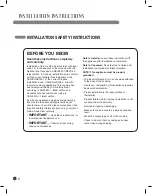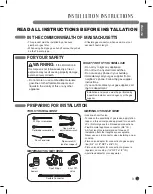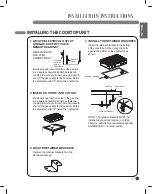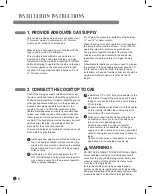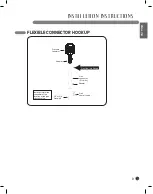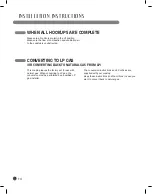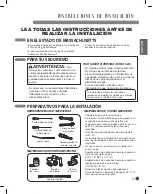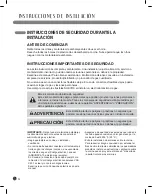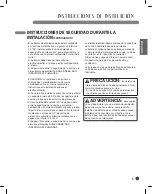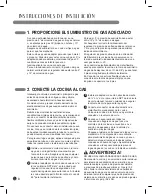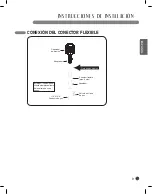
8
This cooktop is designed to operate at a pressure of
5” of water column on natural gas or 10” of water
column on LP, propane or butane gas.
Make sure you are supplying your cooktop with the
type of gas for which it is designed.
This cooktop is convertible for use on natural or
propane gas. When using this cooktop on LP gas,
conversion must be made by a qualified LP installer
before attempting to operate the cooktop on that gas.
For correct operation, the pressure of natural gas
supplied to the regulator should be between 5” and
13” of water column.
For LP gas, the pressure supplied must be between
10” and 13” of water column.
When checking for correct operation of the regulator,
the inlet pressure must be at least 1” more than the
operating -manifold- pressure as given above.
The pressure regulator located at the inlet of the
cooktop manifold must remain in the supply line
regardless of whether natural or LP gas is being
used.
A flexible metal appliance connector used to connect
the cooktop to the gas supply line must have an I.D.
of 5/8” and can be 3 feet max. in length for easy
installation. In Canada, flexible connectors should be
single wall metal connectors less than 6 feet in
length.
1. PROVIDE ADEQUATE GAS SUPPLY
I N S TA L L AT I O N I N S T R U C T I O N S
Shut off the main gas supply valve before removing
the old cooktop and leave it off until the new hook-up
has been completed. Don’t forget to relight the pilot on
other gas appliances when you turn the gas back on.
Because hard piping restricts movement of the
cooktop, the use of a CSA International-certified
flexible metal appliance connector is recommended
unless local codes require a hard-piped connection.
Never reuse an old connector when installing a new
cooktop. If the hard piping method is used, you must
carefully align the pipe; the cooktop cannot be
moved after the connection is made.
To prevent gas leaks, put pipe joint compound on, all
male -external- pipe threads.
1
Install a manual gas line shut-off valve in the gas
line in an easily accessed location outside of the
cooktop. Be sure everyone operating the cooktop
knows where and how to shut off the gas supply
to the cooktop.
2
Install male 1/2” flare union adapter to the 1/2”
NPT internal thread at inlet of pressure regulator.
Use a backup wrench on the pressure regulator
fitting to prevent damage.
3
Install male 1/2” or 3/4” flare union adapter to the
NPT internal thread of the manual shut-off valve,
taking care to back-up the shut-off valve to keep
it from turning.
4
Connect a flexible metal connector to the adapter
on the cooktop. Position the cooktop to permit
connection at the shut-off valve.
5
When all connections have been made, be sure
all cooktop controls are in the off position and
turn on the main gas supply valve.
Check for gas leaks by using manometer.
If a manometer is not available, turn the gas
supply on to the cooktop on and use a liquid leak
detector at all joints and connections to check for
leaks.
Tighten all connections, if necessary, to prevent
gas leakage in the cooktop or supply line.
WARNING!:
DO NOT USE A FLAME TO CHECK FOR GAS LEAKS.
Disconnect the cooktop and its individual shut-off
valve from the gas supply piping system during any
pressure testing of that system at test pressures
more than 1/2 psig(3.5kPa).
Isolate the cooktop from the gas supply piping
system by closing its individual shut-off valve during
any pressure testing of the gas supply system at test
pressures equal to or less than 1/2 psig(3.5kPa)
2. CONNECT THE COOKTOP TO GAS


